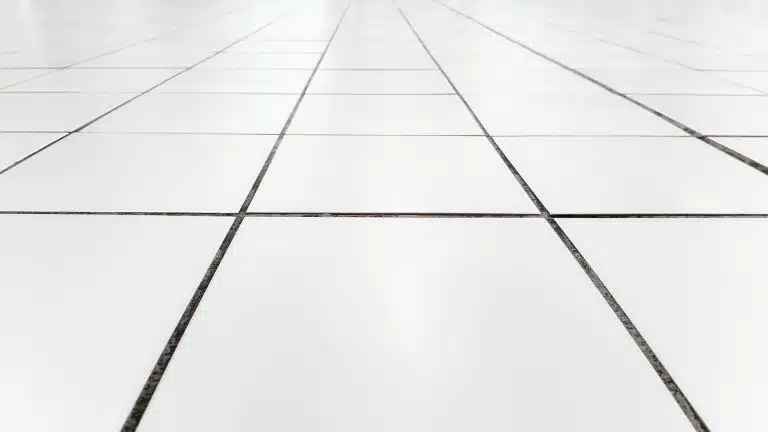Understanding Grout Issues: Causes and Solutions
Jun 10
Grout serves as the essential binding material between tiles, creating a finished look while protecting your surfaces from moisture and dirt. However, many homeowners face issues with grout deteriorating over time, presenting as soft patches or unsightly cracks. These problems not only affect the visual appeal of tiled surfaces but can lead to more serious water damage if left unchecked.
The integrity of grout in your bathroom, kitchen, or any tiled area directly impacts the longevity of your installation. When grout begins to soften or crack, it opens pathways for water to seep beneath tiles, potentially causing extensive damage to subflooring and even structural components. Understanding why these issues occur forms the first step in addressing them effectively and preventing future occurrences.
The integrity of grout in your bathroom, kitchen, or any tiled area directly impacts the longevity of your installation. When grout begins to soften or crack, it opens pathways for water to seep beneath tiles, potentially causing extensive damage to subflooring and even structural components. Understanding why these issues occur forms the first step in addressing them effectively and preventing future occurrences.

Common Causes of Grout Softening
Water intrusion ranks as the primary culprit behind grout softening. In areas with high moisture levels like bathrooms and kitchens, continual exposure to water gradually breaks down the cement compounds in grout. This process accelerates when sealing is inadequate or has worn away over time. Shower areas prove particularly vulnerable, as hot water and steam create perfect conditions for grout deterioration.
Chemical exposure presents another significant factor in grout breakdown. Harsh cleaning products containing acids or bleach can erode the protective properties of grout. Even everyday substances like vinegar, lemon juice, and some commercial cleaners contain acids that slowly eat away at grout over repeated exposures. As explained by experts at The Grout Guy, poor installation also contributes significantly to premature grout failure. When installers mix grout improperly or use insufficient water during application, the resulting material lacks the necessary strength to withstand daily use and environmental factors.
Why Grout Cracks: Expert Analysis
Temperature fluctuations create constant expansion and contraction cycles that put stress on grout lines. As tiles expand in heat and contract in cold, they push and pull against the grout, eventually causing cracks to form. This thermal cycling proves especially problematic in areas exposed to direct sunlight or near heat sources like ovens or fireplaces.
Structural movement represents another major cause of grout cracking. Houses naturally settle over time, and even minor shifts in the foundation can transfer stress to tiled surfaces. Failure to incorporate proper expansion joints during installation significantly increases cracking risk. These specialised joints act as buffers, absorbing structural movement that would otherwise transfer directly to grout lines. Additionally, using incorrect grout type for specific applications can lead to premature failure – for example, using non-flexible grout in areas that experience movement or vibration virtually guarantees cracking over time.
Prevention Strategies for Lasting Grout
Proper sealing stands as the first line of defence against grout deterioration. High-quality sealants create a protective barrier that repels water and stains while strengthening the grout itself. Experts recommend sealing grout immediately after installation (once fully cured) and reapplying sealant annually in high-moisture areas. This simple maintenance step dramatically extends grout lifespan and preserves its appearance.
Adopting gentle cleaning practices helps maintain grout integrity over the long term. Instead of harsh chemical cleaners, use pH-neutral products specifically designed for tile and grout. A mixture of baking soda and water creates an effective, non-abrasive cleaner for routine maintenance. Regular cleaning prevents build-up of substances that might otherwise penetrate and damage grout over time.
Installation quality plays a decisive role in grout longevity. Professional tilers understand the importance of proper substrate preparation, appropriate grout selection, and correct mixing techniques. They incorporate expansion joints where needed and ensure correct curing times. For DIY enthusiasts, investing time in research and preparation before starting a tiling project significantly improves outcomes and reduces future grout problems.
When to Call a Professional
Certain grout issues signal the need for professional intervention. When grout consistently softens despite proper maintenance, underlying water issues may exist within walls or subflooring. Similarly, cracks that reappear after repairs often indicate structural problems requiring expert assessment. Professional grout specialists possess the tools and knowledge to identify root causes rather than merely treating symptoms.
Complete grout replacement becomes necessary when deterioration reaches advanced stages. This complex process involves removing old grout without damaging tiles, thoroughly cleaning grout lines, and applying new material with proper technique. Professionals can also recommend modern grout products with enhanced flexibility and water resistance that outperform older formulations. While DIY repairs might address minor issues, extensive grout failure typically warrants professional attention to ensure lasting results.
The investment in professional grout restoration typically pays dividends through extended tile installation life and prevention of costly water damage repairs. Most importantly, skilled technicians can identify and address underlying moisture or structural issues that would otherwise continue causing problems regardless of surface repairs.
